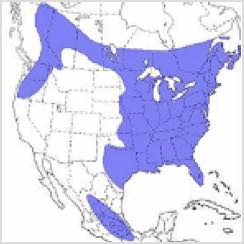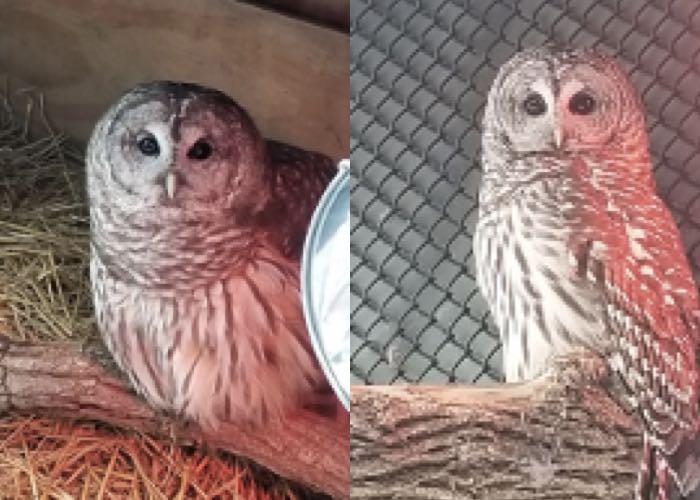Barred Owl
Strix Varia
Conservation Status: Least Concern
Characteristics:
- Large, gray-brown and white bird.
- Round head and no ear tufts.
- Brown eyes.
- Small, sharp, dull yellow beak.
- Male and female plumage are identical, but females are 30% heavier than males.
Lifespan: The barred owl has been known to live up to 10 to 12 years in the wild and 23 years in captivity.
Range and Habitat:
- Forested areas.
- Swamps to riparian areas to uplands.
- Prefer large blocks of forest.
- Home territory is about 700 acres.

Diet:
- Small mammals.
- Rabbits.
- Birds.
- Amphibians.
- Reptiles.
Behavior:
- Mostly active at night.
- Will call and hunt in the daytime.
- Less aggressive than a Great Horned Owl.
- Only nest once per year and lay an average of 2 or 3 eggs per nesting.
- They are monogamous and mate for life.
Fun Facts:
- The belly feathers of some Barred Owls is pink. This is thought to be from eating a lot of crayfish.
- The population has expanded westward in the last century. The more aggressive Barred Owl may displace the Spotted Owl.
- Great Horned Owls are the biggest predator to the Barred Owl.
- The most common mnemonic device for remember their call is “Who cooks for you, who cooks for you all.”
- They make a buzzy raspy hiss and click their beak together when they are agitated.
Keeper Notes:
Guinevere and Evelyn were both acquired by the zoo in 2016 from a rehabilitator. Both owls were determined to be not releasable back into the wild due to the inability to successfully hunt. Guinevere can often be found on the lower perch of the enclosure. Due to neurological damage, it is easier for her to perch at this lower level.

